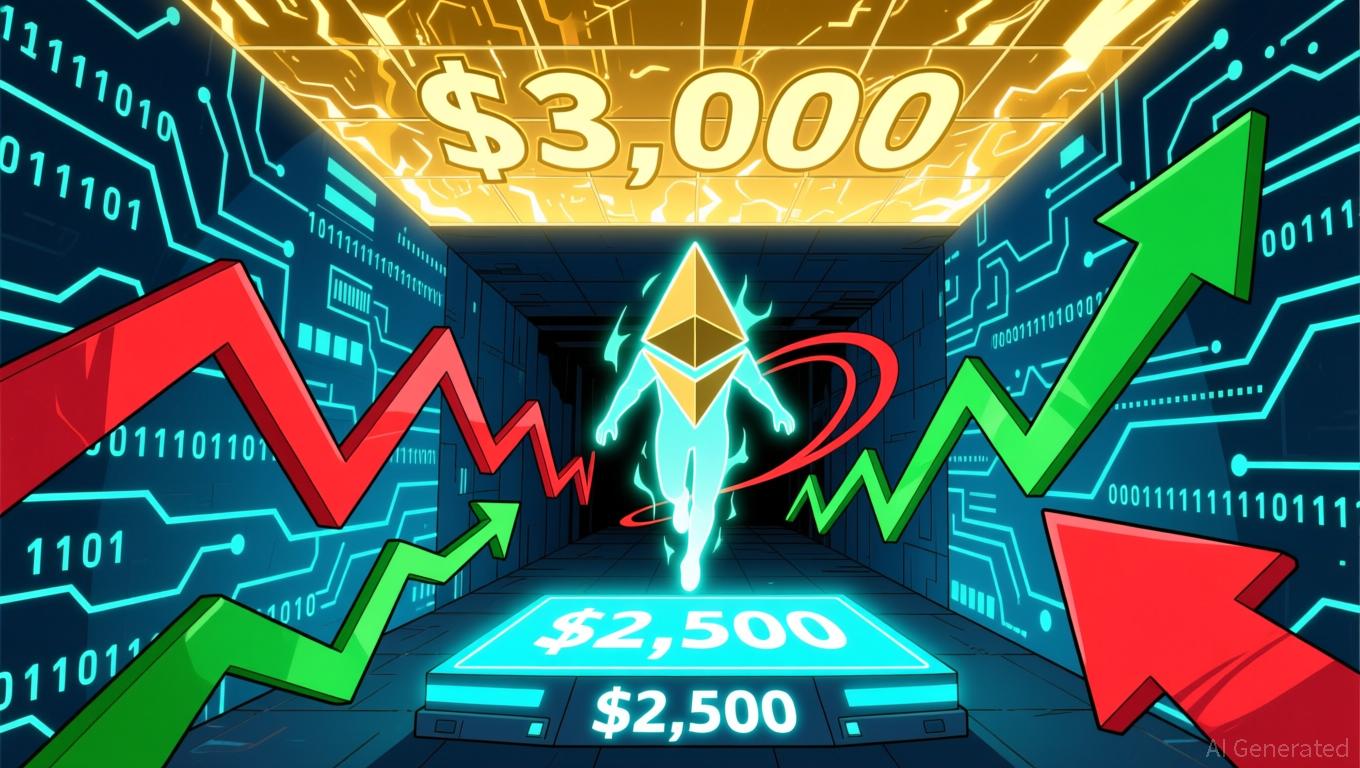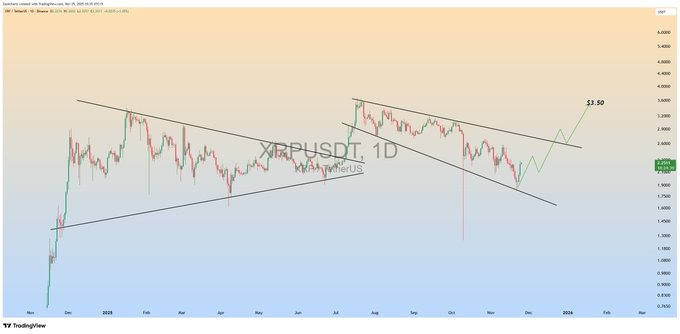Ethereum (ETH) is currently experiencing a crucial period of sideways movement, lingering near significant support zones as market watchers anticipate a possible bounce amid increased market swings. The digital asset
was trading close to $2,800 on November 21, 2025
, and is fluctuating within a downward channel, with $2,500 acting as support and $3,000 as resistance, based on chart patterns. This situation has led to discussions about whether Ethereum is facing a bearish pullback or preparing for a recovery.
Recent figures reveal a notable uptick in ETF withdrawals, intensifying the selling pressure.
Ethereum
ETFs
recorded $1.5 billion in outflows during November
, marking the highest monthly redemption since their inception. BlackRock's Ethereum Trust (ETHA) played a significant role, seeing $53.7 million withdrawn on November 20, while
Fidelity's FBETH ETF received $95.4 million in new investments
, ending a nine-day streak of outflows. These shifts point to evolving institutional attitudes, further influenced by the aftermath of the October 10 sell-off, which
compelled digital asset funds to liquidate ETH
in order to minimize discounts to net asset value.
The recent price trends have prompted warnings from Ethereum co-founder Vitalik Buterin, who
warned that increasing institutional control
— especially with BlackRock's growing ETF presence — could threaten the network's decentralization. He expressed concerns that such influence might lead to technical changes that benefit high-frequency trading systems, potentially sidelining individual node operators. At the same time,
BlackRock
is moving forward with plans for a staked Ethereum Trust ETF,
indicating ongoing institutional interest
despite current market instability.
Technical signals highlight the delicate situation. The $2,400–$2,500 area is seen as a crucial support band, and a drop below this could spark a 30–40% fall toward $1,890–$2,150
as per market experts
. On the other hand, if ETH manages to climb and stay above $3,000, it could set the stage for a move toward $3,700,
according to Derive.xyz CEO Nick Forster
. Blockchain data adds further nuance: long-term holders increased their selling by 300% at the end of November, adding $2.9 billion in sell pressure, while large holders appear to be moving assets off exchanges into cold wallets
based on on-chain analytics
.
Market odds also reflect the prevailing uncertainty.
Event contract statistics suggest a 70% likelihood
that ETH will dip to $2,750 before the year ends, while a death cross — a bearish chart pattern — is approaching as the 50-day EMA nears the 200-day EMA
according to technical analysts
. Nevertheless, Ethereum’s long-term outlook remains strong. The Dencun upgrade has
accelerated Layer-2 growth
, leading to lower transaction costs and higher token burns, while staking has locked up a quarter of the total supply.
Experts remain split on what comes next.
Mister Crypto pointed out Ethereum’s lag
compared to
Bitcoin
, with ETH trading 40% below its 2024 high. Meanwhile, GameSquare CEO Justin Kenna expressed optimism about Ethereum’s practical value,
despite recent price swings
. The future direction will depend on institutional involvement, regulatory developments, and technical upgrades, with the Ethereum Foundation’s roadmap
focusing on scalability and rollup improvements
.


